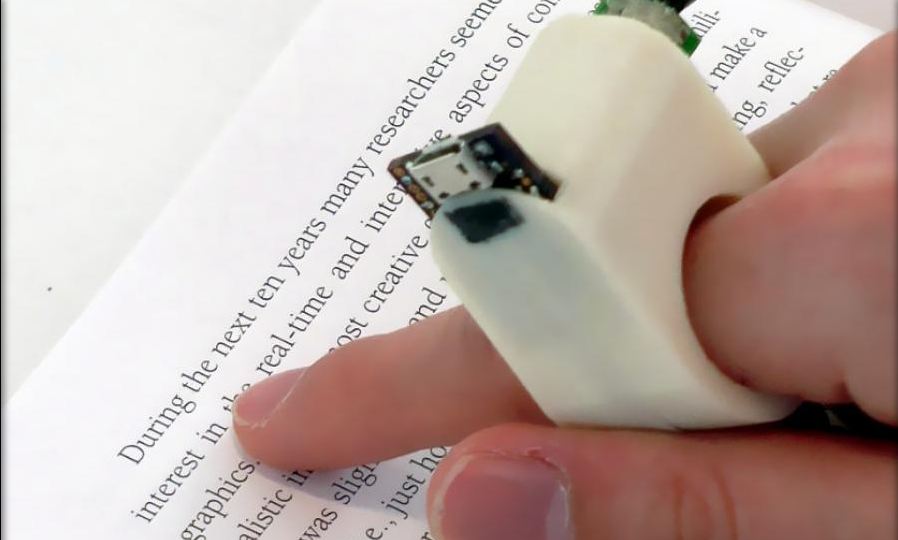The FingerReader – A Tiny ring that Scans Text and converts it into Audio!
The FingerReader is a wearable device that is designed to help blind and visually impaired people to read printed text. It is a device that looks like a fat plastic ring and it is worn on the index finger. Developed by researchers at the MIT Media Lab, FingerReader is still in its prototype stage, fresh from a 3D printer and is still in development to turn into a commercial product.
How does it work? The ring like device consists of a small camera that scans text and converts it into audio. This audio form is played out loud from a small microphone embedded in the ring so that the blind people can follow. Not only is there audio feedback of the words but also sensory feedback of the page layout. The start and end of a line triggers vibration. Even if the motion of the hand moves away from the baseline of the text, the camera detects this loss of scope and the device vibrates. The visibly impaired people can adjust the speed of motion of the finger to their own convenience and go back to a previous sentence if they haven’t followed it.
Why is it still a prototype? Well, as you can see in the video below, the voice feedback sounds artificial and can do with a lot of improvement. Also, it can be made smaller and more efficient with a few changes in the device engineering and design. However, with a brilliant concept such as this, and with the progress made so far, the above demerits can be fixed in no time.
Can also Sync with Smartphone App and Translate texts…
Apart from aiding the blind to read, the developers also tell that this can be used as an efficient language translator. If people wear this device and try swiping their index finger across a new language, they can sync the device with a smartphone app to translate this into a language the user knows. Added to this, children can also wear this to learn new words and illiterate people can now enjoy the luxury of reading books with this device as they cannot read or write languages but they can understand it.
Photo Credits and Project Page – MIT

